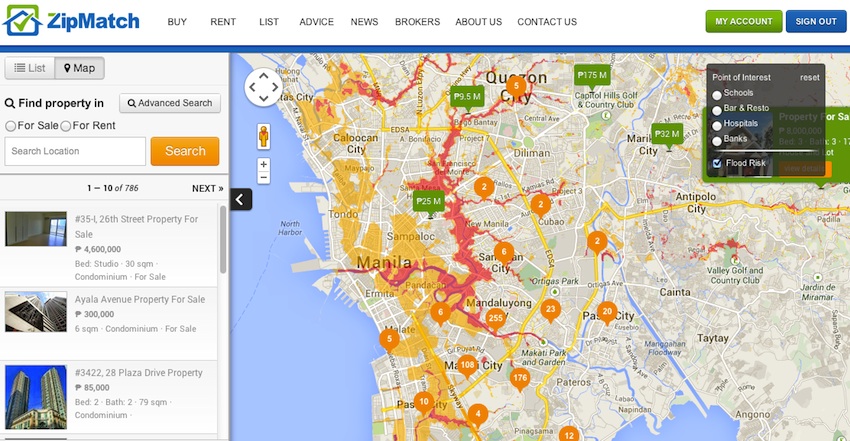You do not need Noah’s farsightedness (and divine guidance) and build an ark to protect your home from flood. As with any natural calamity, there are a number of useful measures you can use to prepare your house from an incoming deluge. Timely, I should say, given that annual flooding is fast becoming the norm in Metro Manila.
First, let’s be clear: flood-proofing, either structural or nonstructural, is aimed at preventing the damage caused by flooding to a house or building. This means there is very little homeowners can do prevent the occurrence of floods.
But more importantly, flood-proofing also covers emergency measures in anticipation of a flood, such as sandbagging, moving furniture and appliances to high floors, blocking openings, and safely evacuating the premises when the need arises.
Now, courtesy of the U.S. Army Corps of Engineers, we will list here four useful ways to flood-proof your home, which will surely help minimize water damage after a severe storm or other disaster.
1. Elevate
This perhaps is the most effective way of flood-proofing your home.
If the structure permits, it’s always wise to raise it above flood levels. Think of houses on stilts above water. But unfortunately this is also costly and, in the case of concrete houses common in the Philippines, virtually impossible.
Should you find yourself in this situation, make sure to elevate whatever valuable items you have at home at levels above floodwaters. Make use of shelves and cupboards to put away valuables, and put appliances and furniture.
2. Create Barriers
Unlike other flood-proofing measures, barriers can protect more than one structure. They can be made of earth, concrete masonry, or steel and can keep floodwaters from reaching a building.
In shallow flooding areas, a common approach is to construct a berm, which is a raised barrier that separates two areas. However, in urban areas where space is limited, floodwalls may be used because they take up less room. Their effectiveness also depends on maintenance over the years.
3. Dry Flood-Proofing
There are also ways to make a structure watertight to prevent floodwaters from entering. Collectively called dry flood-proofing, this technique includes painting the walls with a waterproofing compound or placing plastic sheeting around the walls. The Corps advised temporarily sealing openings, such as doors, windows, sewer lines, and vents, with sandbags or removable closures during flood.
However, dry flood-proofing is only appropriate for structurally sound buildings or those structures strong enough to withstand the pressure from more than 3 feet of water. It’s also not recommended for houses with floors below grade, like basements.
4. Wet Flood-Proofing
In the case of severe flood, similar to what Metro Manila experienced during Typhoon Ondoy in 2009, wet flood-proofing may be the appropriate option.
This involves letting the water in and removing or protecting everything that could be damaged. According to the Corps, most houses cannot withstand water depths of more than 3 feet. When the ground gets saturated, watertight walls and floors start to crack, buckle, or break.
Wet flood-proofing measures range from moving a few valuable items to rebuilding the flood-prone area using materials that cannot be easily damaged by floodwater, like concrete blocks. In this approach, anything susceptible to water damage, such as electrical appliances and wood furniture, need to be moved to a higher level of the house or raised on blocks or platforms.
But perhaps the most effective way of reducing the impact of floods to your home is to choose your area wisely. Indeed, the worst house in a flood-free area is better than the best one in a place that regularly experiences annual flooding.
And as one of its services, ZipMatch releases its own flood map of Metro Manila. You can now check out flood-prone areas within the metropolis so you can better plan your home purchase. Indeed, this is one of the best investment decisions you can make: that your family’s safety is assured.











